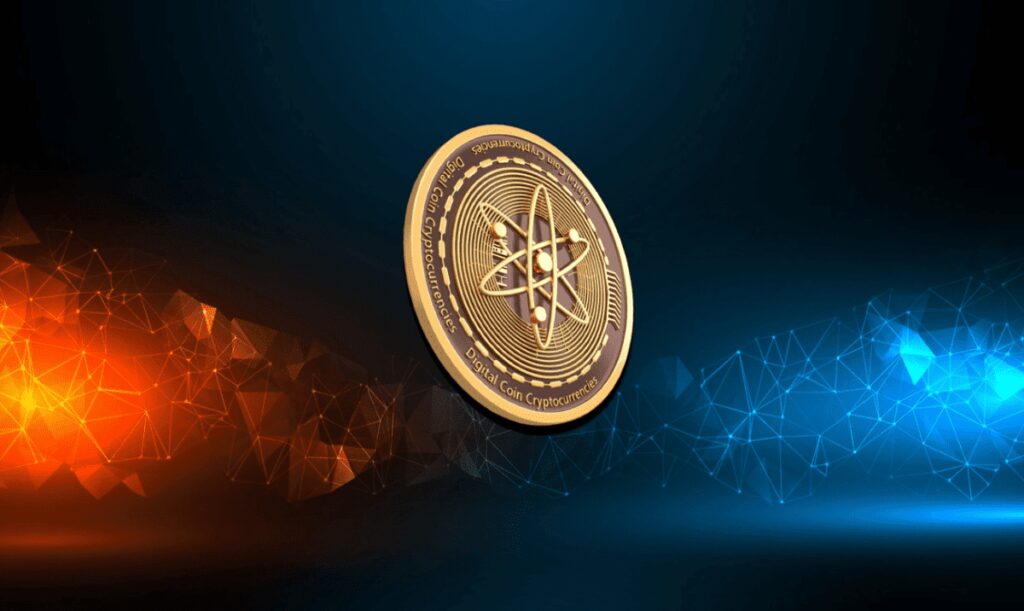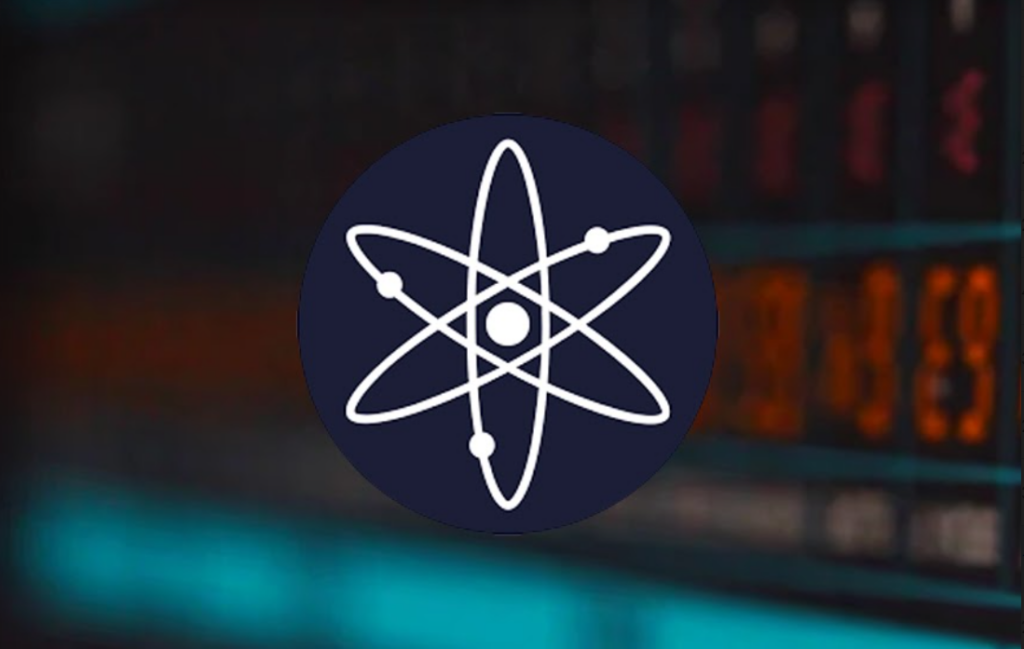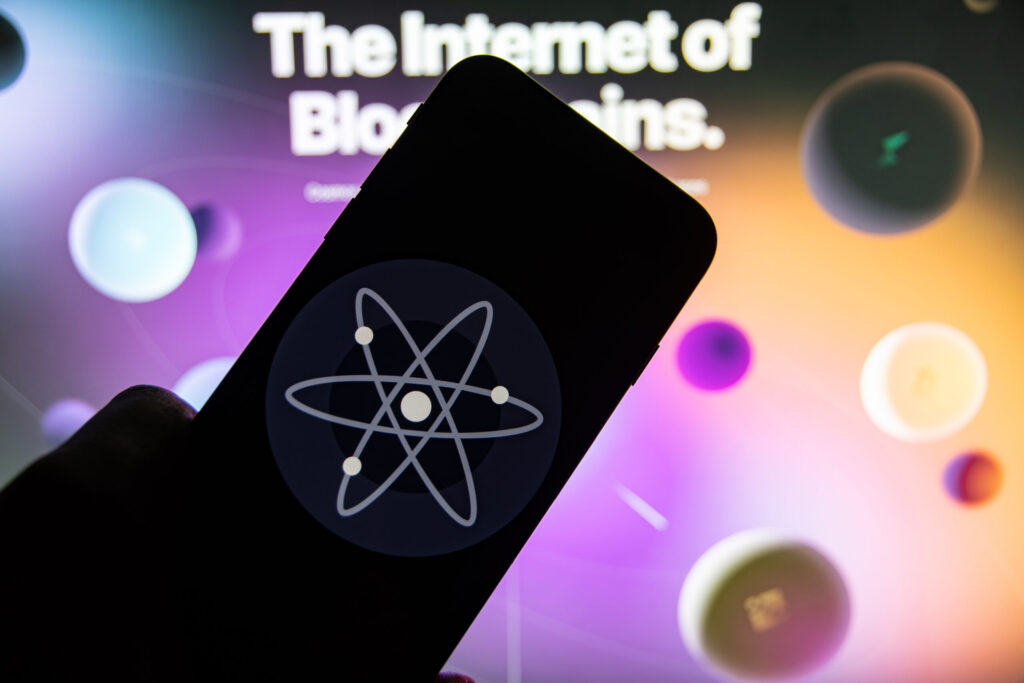The Cosmos Network, which was launched in 2019, is a group of separate blockchains that operate in a decentralized manner. Its primary aim is to tackle the challenges of scalability and interoperability within the blockchain ecosystem. The development team, led by Jae Kwon, worked to create this network.
Fundamentally, Cosmos follows a hub-and-spoke structure where a central hub known as the “Cosmos Hub” links multiple independent blockchains or “zones.” Each zone within the Cosmos Network has its unique set of regulations, validators, and governance procedures, and the Inter-Blockchain Communication (IBC) protocol facilitates interaction between various zones via the Cosmos Hub.
Cosmos relies on the Tendermint consensus algorithm, a fast and secure Byzantine Fault Tolerant (BFT) consensus mechanism for transaction processing. Additionally, the Cosmos Network has a native cryptocurrency known as ATOM, which serves multiple purposes such as staking, governance, and transaction fees.
Cosmos seeks to establish a more efficient and interoperable blockchain ecosystem by connecting independent blockchains, thereby enabling the effortless exchange of data, tokens, and assets across various blockchain networks. This development could potentially unlock several use cases, including decentralized finance (DeFi), gaming, identity verification, and supply chain management, among others.
What is ATOM Token?

Source: zipmex.com
The Cosmos Network has its own digital currency called ATOM, which serves various functions within the ecosystem, such as staking, governance, and transaction fees.
Being a proof-of-stake (PoS) cryptocurrency, ATOM enables its holders to secure the network by staking their tokens. By doing so, they can earn additional ATOM tokens as rewards. Additionally, staking helps to enhance network security by elevating the overall staked value, thus minimizing the possibility of a malicious attack.
ATOM is also employed for governance purposes in the Cosmos Network. ATOM token holders can use their tokens to participate in voting on proposals related to the network’s development and growth. This approach fosters a more decentralized and community-driven decision-making process.
ATOM functions as a transaction fee on the Cosmos Network. To send transactions or transfer tokens on the Cosmos Network, users are required to pay a fee in ATOM. These fees incentivize validators to process transactions and reinforce network security.
How Does Cosmos Work?
- Creation of independent zones: Developers have the ability to create their blockchain zones on the Cosmos Network, utilizing a variety of programming languages and frameworks. These zones can have their unique set of regulations, validators, and governance mechanisms.
- Connection to the Cosmos Hub: After the creation of a zone, it can link to the Cosmos Hub utilizing the IBC protocol. The IBC protocol enables the smooth transfer of tokens and data between various zones present on the Cosmos Network.
- Validation and consensus: The Cosmos Network adopts the Tendermint consensus algorithm, which is a Byzantine Fault Tolerant (BFT) consensus mechanism that facilitates fast and secure transaction processing. Validators operating within the Cosmos Network are accountable for validating blocks and processing transactions on the network.
- Staking and governance:The network security can be ensured by staking their tokens, as ATOM holders can participate in the process. Additional ATOM tokens can be earned as rewards by staking tokens. Additionally, ATOM holders can utilize their tokens to contribute to governance by participating in voting on proposals relating to the network’s development and evolution.
- Interoperability: The IBC protocol implemented in the Cosmos Network facilitates interoperability among various zones within the network, enabling the smooth transfer of tokens and data across diverse blockchains. As a result, this capability has the potential to unlock numerous use cases.
What is the current price of ATOM Token?

Source: themarketperiodical.com
286,370,297 ATOM coins are in circulation, and the maximum supply is not known. The highest price paid for Cosmos(ATOM) is $44.45, which was recorded on Jan 17, 2022. At the time of writing, ATOM market cap is 3,602,974,876. The current ATOM token price is $12.58 per coin. The 24-hour trading volume for the coin is $296,202,171.
Vantages Of Cosmos
- Scalability: The modular architecture and use of Tendermint Core in the Cosmos Network allows for swift and reliable transaction processing, resulting in a high transaction processing capacity per second (TPS) that is highly scalable.
- Customizability: Developers can leverage the modular framework of the Cosmos SDK to construct custom blockchain applications that can be tailored to meet their unique requirements. This functionality empowers developers to create blockchain networks with their own set of governance mechanisms, rules, and other characteristics on top of the Cosmos Network.
- Security: The Cosmos Network is characterized by robust security measures, such as the Tendermint BFT consensus and IBC protocol security guarantees, which are integrated to protect against various attacks. By incorporating these features, the network is able to ensure its long-term security and resist threats to its integrity.
- Governance: The Cosmos Network is distinguished by a decentralized governance mechanism that enables ATOM holders to engage in the network’s development and growth. Through this approach, the network is community-driven, transparent, and accountable to its stakeholders.
- Community: The Cosmos ecosystem has a lively and expanding community of developers, users, and stakeholders collaborating to construct a decentralized and interoperable future for blockchain technology.

Source: invezz.com
What Are The Adecosystem Of Cosmos?
Several essential elements make up the Cosmos ecosystem, which consists of a variety of projects and applications constructed on the Cosmos Network. Here are some of the significant components of the Cosmos ecosystem:
- Cosmos SDK: The Cosmos SDK is a modular framework that enables developers to construct tailored blockchain applications on the Cosmos Network. It provides developers with an assortment of tools and modules to establish custom blockchain zones with their unique regulations, governance mechanisms, and other features.
- Tendermint Core: Which functions as the BFT consensus engine, is the backbone of the Cosmos Network, ensuring rapid and secure transaction processing while safeguarding the network against potential attacks.
- Inter-Blockchain Communication (IBC) Protocol: The IBC protocol is responsible for facilitating interoperability among various blockchain zones on the Cosmos Network. It enables smooth transfer of tokens and data across different blockchains, which can unlock a plethora of potential use cases.
- Gaia: Gaia refers to the software implementation of the Cosmos Hub, which functions as the central hub for the entire Cosmos Network, enabling the interconnection and interoperability among various blockchain zones on the network.
- Tendermint BFT: Tendermint BFT is an independent version of the Tendermint consensus algorithm that developers can utilize to create custom blockchain networks that operate independently of the Cosmos Network.
The goal of Cosmos is to create a more effective and interoperable blockchain ecosystem that enables the frictionless exchange of information, tokens, and assets between various blockchains.



